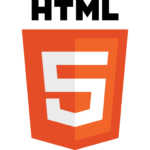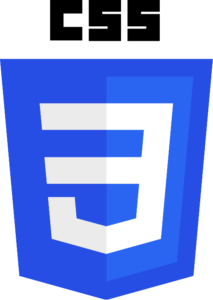Frontend Developer Roadmap for Beginners in 2024
In today’s digital landscape, frontend development remains a cornerstone of web development, offering exciting opportunities for beginners to dive into the world of coding. Whether you’re intrigued by creating beautiful user interfaces or passionate about enhancing user experiences, embarking on the journey to become a frontend developer is both rewarding and fulfilling. However, with the ever-evolving technologies and frameworks, navigating this path can seem daunting at first. Fear not, as this detailed guide will serve as your roadmap, providing you with the essential steps and resources to kickstart your journey as a frontend developer in 2024.

Understanding Frontend Development
Frontend development encompasses designing the visual components and interactive functionalities of websites and web applications, engaging users directly. It encompasses three fundamental languages: HTML, CSS and Javascript



HTML (Hyper Text Markup Language)
HTML forms the structure of web pages, defining the layout and hierarchy of content elements such as headings, paragraphs, images, and links. It provides the skeleton upon which web pages are built, organizing content into a meaningful structure that browsers can understand and render.
HTML is a markup language comprised of tags surrounded by angle brackets, each serving a specific purpose. For example, <h1> represents a top-level heading, <p> denotes a paragraph, <img> embeds an image, and <a> creates a hyperlink. Understanding the basic syntax and semantics of HTML is essential for frontend developers to create well-structured and accessible web pages.
CSS (Cascading Style Sheets)
While HTML defines the structure of web content, CSS is responsible for styling HTML elements, enhancing their visual presentation and aesthetic appeal. CSS enables developers to customize various aspects of a web page’s appearance, including colors, fonts, margins, padding, and layout.
CSS operates on a set of rules known as selectors, which target specific HTML elements or groups of elements for styling. By applying styles to these selectors, developers can achieve consistent and visually appealing designs across different web pages. Additionally, CSS provides powerful layout mechanisms such as Flexbox and Grid, allowing for flexible and responsive page layouts.
JavaScript
JavaScript is a dynamic programming language that adds interactivity and behavior to web pages. Unlike HTML and CSS, which primarily focus on defining static content and styles, JavaScript enables developers to create interactive elements, respond to user actions, and dynamically update page content.
JavaScript runs directly in the browser and has access to the Document Object Model (DOM), which represents the structure of an HTML document as a tree of objects. Through DOM manipulation, JavaScript can modify the content, structure, and style of a web page in real-time, providing a rich and interactive user experience. Additionally, JavaScript powers various web development frameworks and libraries, such as React, Vue.js, and Angular, which streamline the process of building complex web applications.
The Frontend Developer Roadmap
1. Getting Started with HTML and CSS
Begin your journey by mastering the basics of HTML and CSS. Explore online tutorials, interactive courses, and resources like Mozilla Developer Network (MDN) to grasp concepts such as:
- HTML5 semantic elements
- CSS selectors and specificity
- Responsive web design principles
- Flexbox and Grid layout systems
Practice building simple web pages and experiment with different layouts and styles to solidify your understanding.
2. Diving Deeper into JavaScript
Next, dive into the world of JavaScript to unleash the full potential of frontend development. Focus on learning:
- Variables, data types, and operators
- Control flow structures (if statements, loops)
- Functions and scope
- DOM manipulation and event handling
- Asynchronous JavaScript (Promises, async/await)
Utilize platforms like freeCodeCamp, Codecademy, or Udemy to follow structured learning paths and work on projects to apply your knowledge effectively.
3. Version Control with Git and GitHub
Effective version control is essential for fostering collaborative development and monitoring alterations within your codebase. Learn how to use Git for version control and GitHub for hosting your repositories. Familiarize yourself with common Git commands like commit, push, pull, and branch management.
4. Introduction to Frontend Frameworks and Libraries
Frontend frameworks and libraries play a pivotal role in modern web development, offering developers powerful tools to streamline development and enhance productivity. Let’s explore some popular options:
React.js
React.js, developed and maintained by Facebook, has emerged as one of the most widely adopted JavaScript libraries for building user interfaces. Its component-based architecture enables developers to break down complex UIs into reusable and composable components, promoting code reusability and maintainability.
Key features of React.js include:
- Virtual DOM: React.js utilizes a virtual representation of the DOM, allowing for efficient updates and rendering of UI components. This strategy helps to minimize unnecessary manipulations of the Document Object Model (DOM), leading to enhanced performance.
- JSX: React introduces JSX (JavaScript XML), a syntax extension that enables developers to write HTML-like code within JavaScript, making it easier to define UI components and their structure.
- Unidirectional Data Flow: React follows a unidirectional data flow architecture, where data flows in a single direction from parent to child components. This facilitates predictable state management and helps prevent data inconsistencies.
- React ecosystem: React.js boasts a vast ecosystem of libraries, tools, and extensions, including React Router for client-side routing, Redux for state management, and React Native for building cross-platform mobile applications.
Vue.js
Vue.js is a progressive JavaScript framework designed for building interactive and reactive web interfaces. Developed by Evan You, Vue.js is known for its simplicity, flexibility, and ease of integration with existing projects.
Key features of Vue.js include:
- Reactive Data Binding: Vue.js provides built-in support for reactive data binding, allowing developers to declaratively associate DOM elements with underlying data. When the data changes, the UI automatically updates to reflect the new state.
- Component-based Architecture: Similar to React, Vue.js embraces a component-based architecture, enabling developers to encapsulate UI functionality into reusable components. Vue components can be easily composed to create complex UIs while maintaining separation of concerns.
- Directives and Templates: Vue.js offers a rich set of directives and templating features that simplify DOM manipulation and event handling. Directives such as v-if, v-for, and v-on provide convenient shortcuts for common tasks, enhancing developer productivity.
- Vue CLI: Vue.js comes with a powerful command-line interface (CLI) tool that streamlines project setup, scaffolding, and development. The Vue CLI offers built-in support for features like webpack bundling, hot module replacement, and code linting, making it easy to build production-ready applications.
Angular
Angular, developed and maintained by Google, is a robust JavaScript framework ideal for creating dynamic web applications. Known for its opinionated architecture and robust feature set, Angular provides developers with a complete solution for frontend development.
Key features of Angular include:
- Two-way Data Binding: Angular introduces two-way data binding, where changes to model data are automatically reflected in the UI, and vice versa. This bidirectional data flow simplifies state management and keeps the UI in sync with the underlying data model.
- Dependency Injection: Angular’s dependency injection mechanism promotes modularity and testability by allowing components to declare their dependencies explicitly. This facilitates code reuse, separation of concerns, and easier unit testing.
- Routing and Navigation: Angular offers a powerful routing module for managing navigation between different views and components within a single-page application (SPA). Developers can define routes, nested routes, and route guards to control access and behavior.
- CLI and Tooling: Angular provides a robust command-line interface (CLI) tool that streamlines project setup, development, and deployment tasks. The Angular CLI offers features like project scaffolding, code generation, testing utilities, and build optimization, empowering developers to build scalable and maintainable applications.
Choose one framework to specialize in initially, but remain open to exploring others as you progress in your journey. Each frontend framework and library brings its own set of strengths and considerations, so take the time to experiment and find the right fit for your projects and preferences.
5. Building Responsive and Accessible Web Applications
As a frontend developer, it’s essential to prioritize accessibility and responsiveness in your web applications. Learn about accessibility best practices, including semantic HTML, ARIA (Accessible Rich Internet Applications) attributes, and keyboard navigation. Experiment with CSS media queries to create responsive designs that adapt to different screen sizes and devices.
6. Tools and Workflow Optimization
Familiarize yourself with developer tools and workflows to streamline your development process:
- Code editors such as Visual Studio Code, Sublime Text, or Atom
- Browser developer tools for debugging and inspecting web pages
- Task runners and build tools such as Webpack or Gulp for automating repetitive tasks
- CSS preprocessors like Sass or Less for efficient styling workflows
7. Continuous Learning and Building Projects
The landscape of frontend development evolves rapidly, underscoring the importance of staying updated with the latest trends and technologies. Engage with the developer community through forums, meetups, and online communities like Stack Overflow and Reddit. Continuously build projects to apply your skills, showcase your abilities, and expand your portfolio.
Conclusion:
In conclusion, embarking on the journey to become a frontend developer in 2024 offers a wealth of opportunities for growth and creativity. By mastering the essential languages and tools, honing your skills in frontend frameworks, and prioritizing accessibility and responsiveness, you can create impactful web experiences that delight users across the globe. Remember, frontend development is not just about writing code; it’s about crafting intuitive interfaces, solving problems creatively, and continuously learning and adapting to new technologies. So, embrace the challenges, stay curious, and never stop exploring the endless possibilities that frontend development has to offer.
For more informative blogs, feel free to explore our blog page. If you’re interested in learning new technologies, don’t forget to check out our diverse range of courses.



